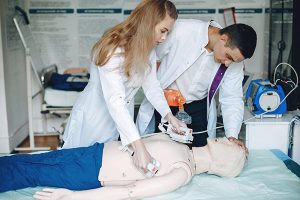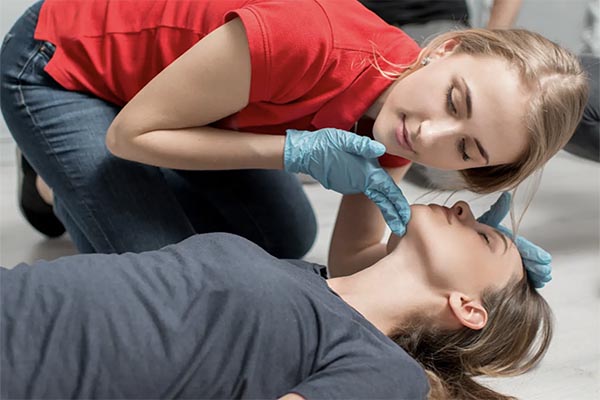
In the realm of healthcare, home health aides play a crucial role in providing care and support to patients in their own homes. One essential skill for home health aides is the ability to perform cardiopulmonary resuscitation (CPR) in emergency situations. This step-by-step guide will walk you through the process of obtaining CPR certification, ensuring you’re well-prepared to respond effectively in emergencies.
CPR certification is not just a credential; it’s a vital skill that can save lives. Home health aides often work with elderly or medically fragile individuals who may experience cardiac arrest or other emergencies. Being CPR-certified ensures that you can provide immediate and effective care until professional medical help arrives.

Before diving into the certification process, it’s important to understand what CPR and first aid entail.
Cardiopulmonary resuscitation (CPR) is a life-saving technique that combines chest compressions and rescue breaths to maintain circulation and breathing in a person who has suffered cardiac arrest.
First aid involves the initial care provided for an illness or injury. It can include a range of practices, from bandaging a wound to performing CPR.
The first step in obtaining CPR certification is to find a reputable certification provider. Several organizations offer CPR certification, including:
These organizations provide high-quality training and widely recognized certifications.
Not all CPR courses are the same. As a home health aide, you’ll want to choose a course that covers CPR for adults, children, and infants. Some courses also include first aid training, which can be beneficial.
Once you’ve chosen a certification provider and course, the next step is to register. Most organizations offer both in-person and online courses. Choose the format that best fits your schedule and learning style.
The training typically involves two parts: theoretical learning and hands-on practice.
In the theoretical portion, you’ll learn about:
Hands-on practice is crucial for mastering CPR techniques. You’ll practice on mannequins to ensure you can perform chest compressions and rescue breaths correctly.
After completing the training, you’ll need to pass a certification exam. The exam typically includes:
Upon passing the exam, you’ll receive your CPR certification. This certification is usually valid for two years, after which you’ll need to renew it by taking a refresher course.

It’s essential to keep your CPR skills up to date. Most certification providers offer refresher courses to help you stay current with the latest techniques and guidelines.
Continuing education is important in the healthcare field. Consider taking additional courses in advanced first aid, pediatric CPR, or other relevant areas to further enhance your skills.
Obtaining CPR certification is a vital step for any home health aide. It not only enhances your employability but also equips you with the skills needed to save lives. By following this step-by-step guide, you can confidently pursue and obtain your CPR certification, ensuring you’re prepared to respond effectively in any emergency situation.
The duration can vary, but most courses take between 4 to 6 hours to complete.
CPR certification typically needs to be renewed every two years.
Yes, many providers offer online CPR courses, but ensure they include a hands-on component for practice.
While not always mandatory, many employers prefer or require CPR certification for home health aides.
By investing in CPR certification, you’re taking an important step towards providing the best care possible for your patients. Whether you’re just starting your career as a home health aide or looking to enhance your skills, CPR certification is an invaluable asset.
Ready to take the next step in advancing your career and ensuring safety? Don’t wait until an emergency strikes. Get your CPR certification today with CPR Classes Near Me. Our expert instructors provide comprehensive training, tailored to your needs as a home health aide. Equip yourself with the skills to make a difference—sign up now and be prepared to save lives. Visit CPR Classes Near Me to find a course near you and begin your certification journey now!
Our primary goal is to ensure that you receive a top-quality CPR/First Aid certification. With our in-person training in Austin, you can learn CPR and BLS in just one class. Your presence is all that’s needed to continue with your lesson! During your session, you will complete all the live-training components necessary to ensure you receive your AHA Healthcare Provider certification card.
Our CPR Classes in Austin are discounted to $59.95 (saving you $20), and our CPR + First Aid Class is offered at $79.95 (also saving you $20). When looking for CPR Classes, ensure to check for the American Heart Association seal. Other sites might seem cheaper but frequently lack the official training credentials demanded by employers.
Upon successful completion of the course, you will obtain a CPR certification that is valid for two years. The AHA CPR certification is recognized with the highest acceptance rate among employers nationwide.
Indeed! Enroll in any CPR Certification Austin BLS course to extend your certification for an additional two years. The in-person BLS course and the Renewal Class are identical.
Anyone capable of completing the course independently should consider pursuing CPR training and CPR Certification. There is no minimum age restriction for obtaining a CPR certification in Austin through the American Heart Association (AHA)..
CPR training needs to be carried out in person to guarantee its effectiveness. Our experienced instructors offer an engaging and dynamic learning experience. Typically, employers do not recognize CPR certifications that are obtained solely through online courses.
All authorized American Heart Association training centers are obligated to display the entire video. After a three-hour session with CPR Classes Near Me Austin, your BLS CPR eCard will be promptly issued by the instructor on the same day!